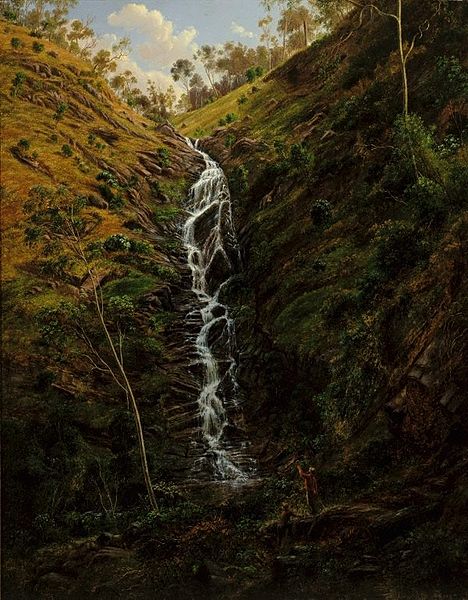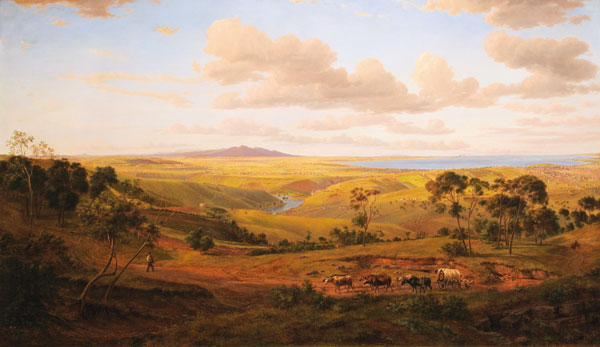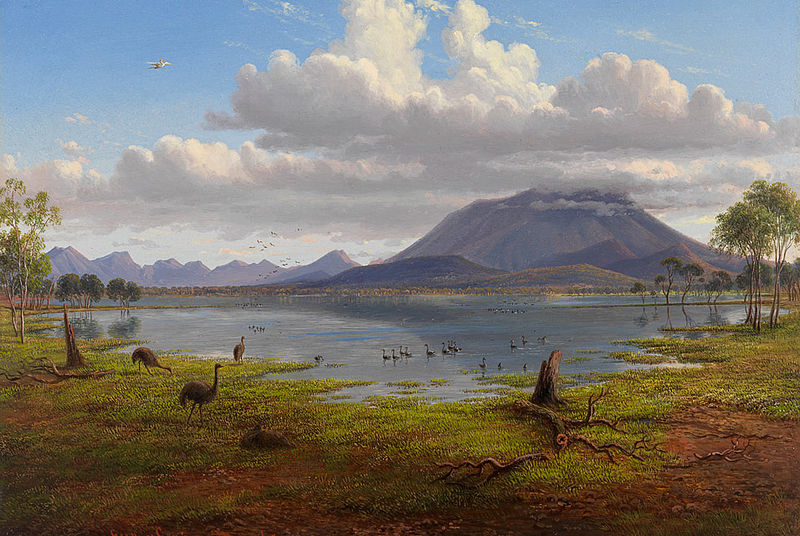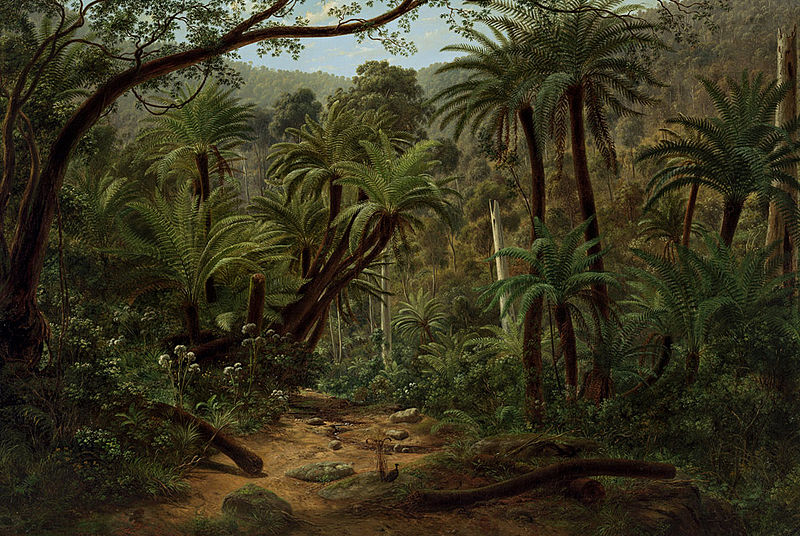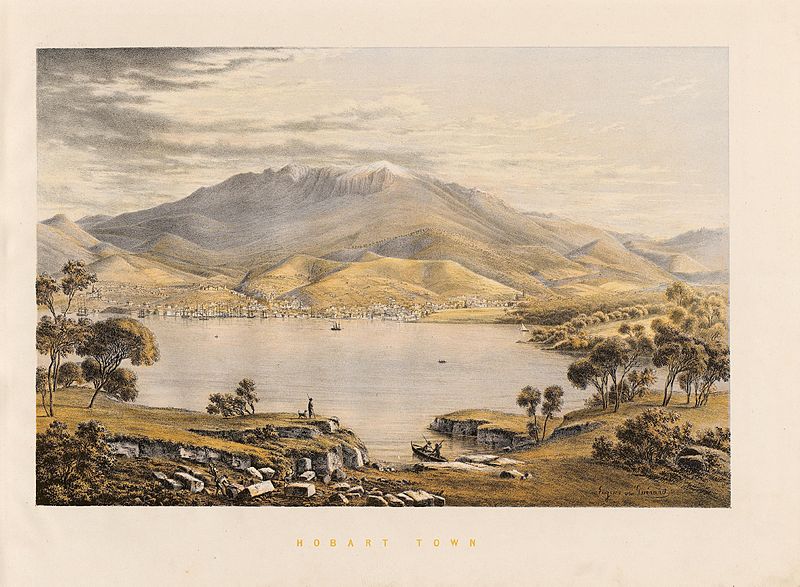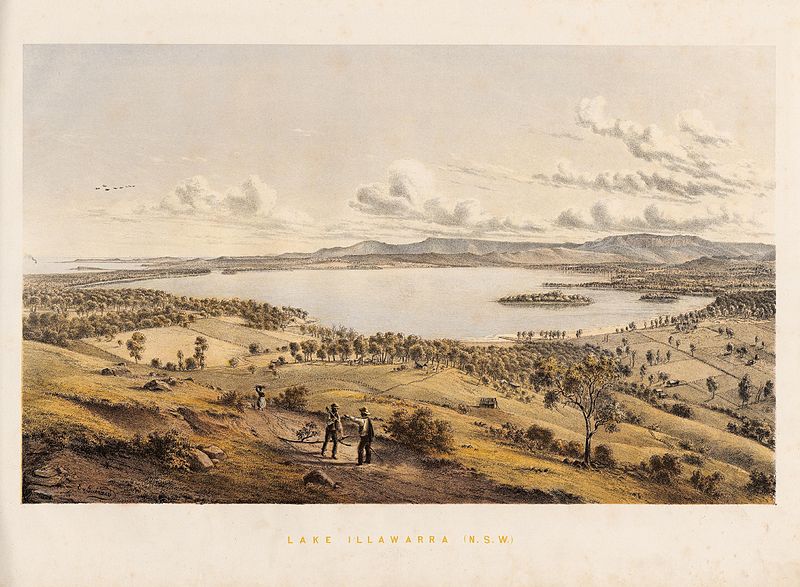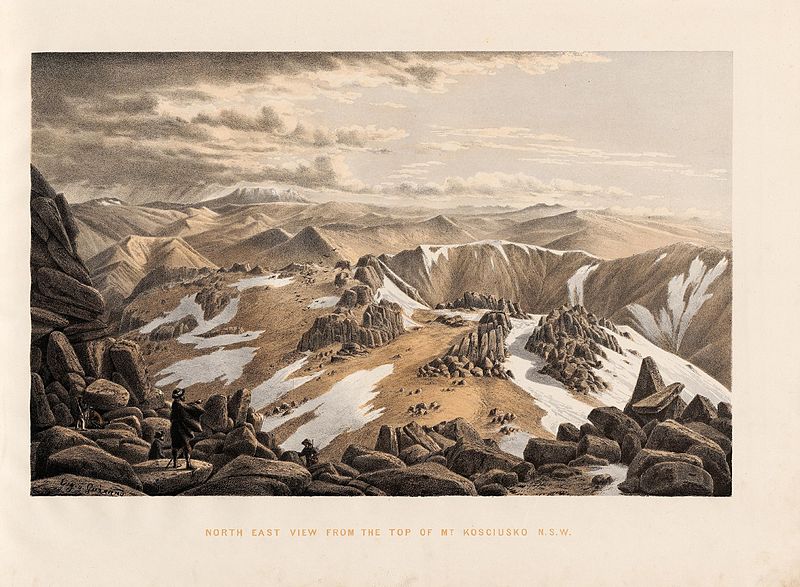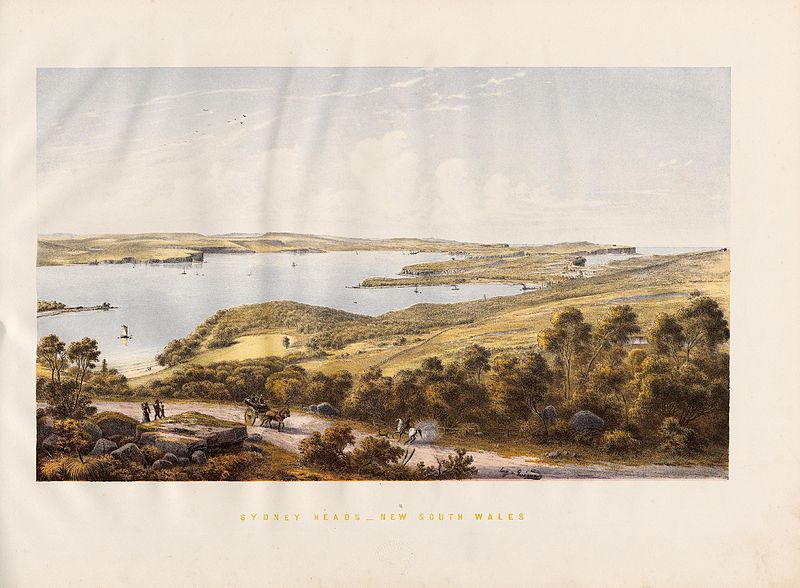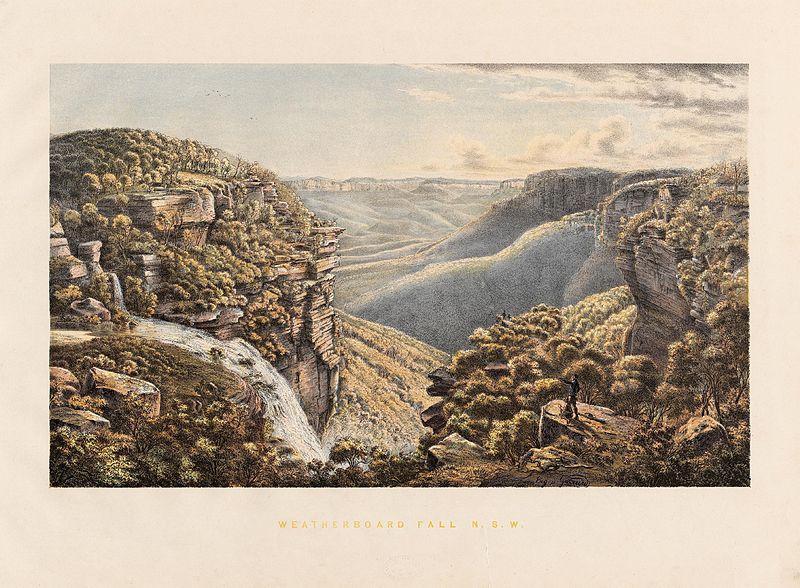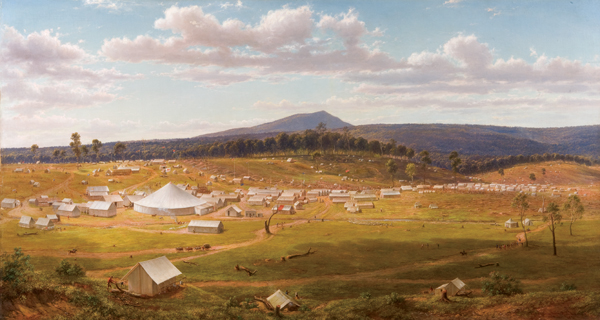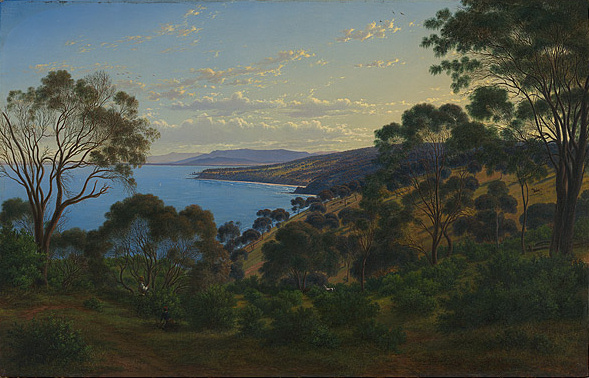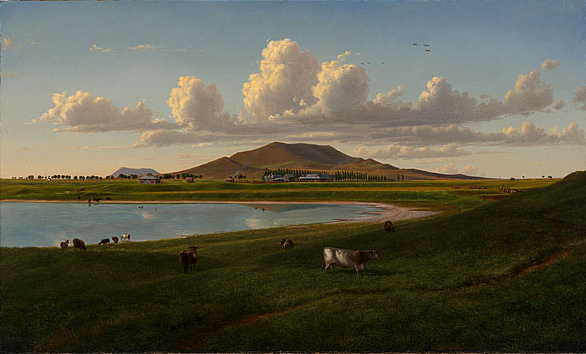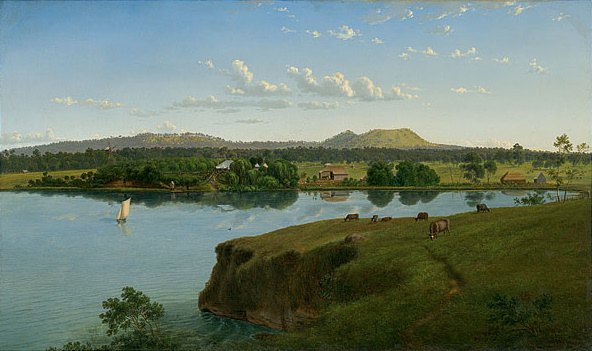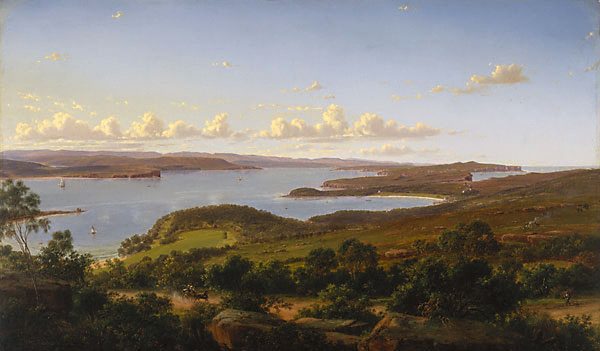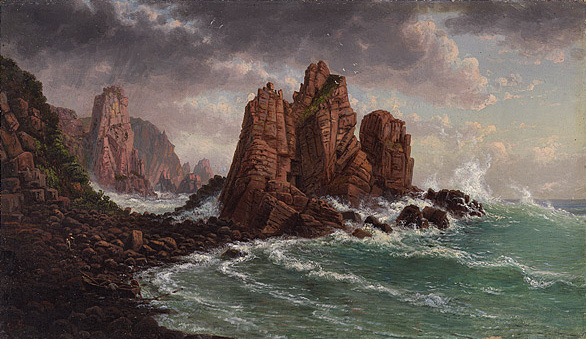<Back to Index>
- Painter Johann Joseph Eugene von Guérard, 1811
PAGE SPONSOR
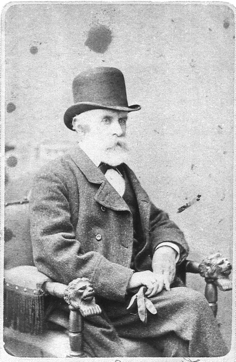
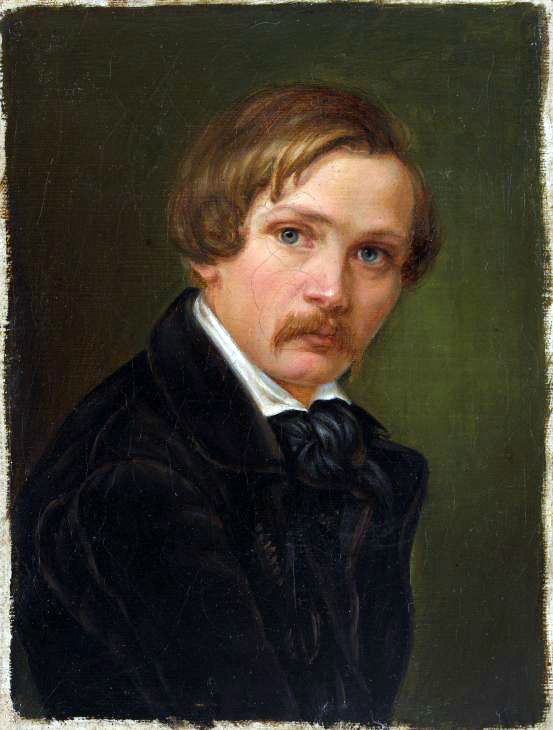
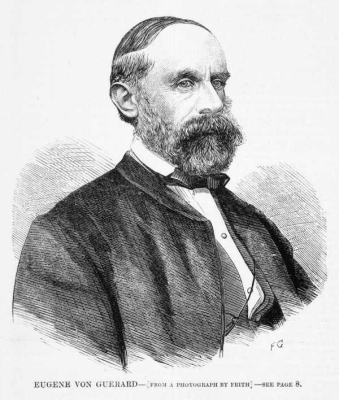
Johann Joseph Eugene von Guérard (17 November 1811 – 17 April 1901) was an Austrian born artist, active in Australia from 1852 until 1882. In Australia, this artist is usually referred to as Eugene von Guerard.
Born in Vienna, von Guerard toured Italy with his father (a painter of miniatures at the court of Emperor Francis I of Austria) from 1826, and between 1830 and 1832 resided in Rome, where he became involved with the Nazarenes, a group of German expatriate artists. From 1849 to 1854 he studied landscape painting at the Düsseldorf Academy, and traveled widely. Von Guerard's personal artistic style was formed by the heritage of Claude Lorrain, Nicolas Poussin and Salvator Rosa, while at the Düsseldorf Academy he was inspired by the German Romantic landscape tradition exemplified by the art of Caspar David Friedrich, which, like the Nazarenes, attempted to link man and God through nature. He is associated with the Düsseldorf school of painting.
In 1852 von Guerard arrived in Victoria, Australia, determined to try his luck on the Victorian goldfields. As a gold digger he was unsuccessful, but he did produce a large number of intimate studies of goldfields life, quite different from the deliberately awe - inspiring landscapes for which he was later to become famous. Realizing that there were opportunities for an artist in Australia, he abandoned the diggings and was soon undertaking lucrative commissions recording the dwellings and properties of wealthy pastoralists.
By the early 1860s von Guerard was recognized as the foremost landscape artist in the colonies, touring Southeast Australia and New Zealand in pursuit of the sublime and the picturesque. He is most known for the wilderness paintings produced during this time, which are remarkable for their shadowy lighting and fastidious detail. Indeed, his view of Tower Hill in South Western Victoria was used as a botanical template over a century later when the land, which had been laid waste and polluted by agriculture, was systematically reclaimed, forested with native flora and made a state park. The scientific accuracy of such work has led to a reassessment of von Guerard's approach to wilderness painting, and historians believe it likely that the landscapist was strongly influenced by the environmental theories of the leading scientist Alexander von Humboldt.
In 1866 his Valley of the Mitta Mitta was presented to the national gallery at Melbourne; in 1870 the trustees purchased his "Mount Kosciusko". In 2006, the City of Greater Geelong purchased his 1856 painting View of Geelong for A$3.8M. His painting, Yalla-y-Poora, is in the Joseph Brown Collection on display at the National Gallery of Victoria.
In 1870 von Guerard was appointed the first Master of the School of Painting at the National Gallery of Victoria, where he was to influence the training of artists for the next 11 years. His reputation, high at the beginning of this period, had faded somewhat towards the end because of his rigid adherence to picturesque subject matter and detailed treatment in the face of the rise of the more intimate Heidelberg School style. Among his pupils were Frederick McCubbin and Tom Roberts. Von Guerard retired from his position at the National Gallery School the end of 1881 and departed for Europe in January 1882. In 1891 his wife died. Two years later, he lost his investments in the Australian bank crash and he lived in poverty until his death in Chelsea, London, on 17 April 1901.
